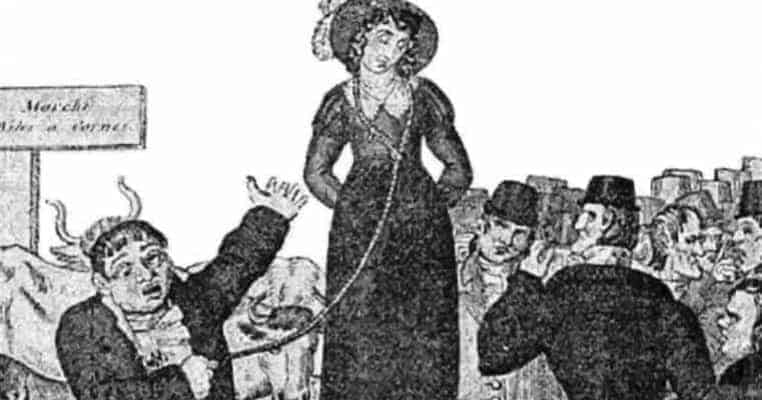From the 1600’s to the early 1900’s in Great Britain, going through a divorce was an extremely expensive process that most people could not afford. When a husband and wife agreed that their relationship just wasn’t working out, they needed to come up with alternative solutions to dissolve their marriage. At that time, women could not vote, they had little to no viable employment options where they could work to support themselves, and there were typically no childcare options.
A woman’s only options outside of marriage were to resort to prostitution, or go to the workhouses with her child. This was a terrible fate that most people would never wish on their worst enemy. Just like today, there were plenty of couples who knew their relationship was not working out, and they wanted to part ways amicably, but the inability to get a divorce put people in a really awkward position. Their only options were to be forced to stay married and miserable, abandon a wife to misery, or come up with an alternative solution. This is what lead to the custom of “wife selling”, which is exactly what it sounds like.

The Wife-Selling Process
Once a husband and wife agreed to the sale, a woman would stand in front of a crowd of single men who were looking for a wife. The woman would often wear a leather halter and be held on a leash, which is what they normally do for livestock auctions. This was all part of the good-natured joke of the sale, but it was also obviously very demeaning for women, and it made it clear that she was the husband’s “property” that could be bought or sold. While some men viewed this as a joke, the consequences were very serious. Buyers truly did pay up for women and children. There were sometimes even lawyers on-site to sign documentation.
At that time, a man could take legal action against another man for sleeping with his wife. During this wife sale process, men were signing away their rights, while still legally staying married to her. Bigotry is illegal, meaning that someone cannot be legally married to two people at once. If their marriage was documented, she was not allowed to remarry this second man. However, many lower-class English people who lived outside of a city would have a ceremony in a church to celebrate their wedding with a spiritual unity, but never bothered to pay for a wedding license. So technically, there was no need for a divorce, and the woman was free to marry the second man. However, these people would sometimes have to go through the “ecclesiastical” or spiritual courts run by the church, which were not exactly a walk in the park, either.
Just like a wedding, these wife sales were always done in front of a large audience, so that there were multiple witnesses to the transaction. Even if it was honor-based, these witnesses could verify that the sale took place, and the town cryer would even announce the sale, just in case. However, it was in a man’s best interest to get their agreement in writing. In 1758, a husband continued to harass his ex-wife and her new husband, claiming that he did not receive enough money for her. They had to go to court to settle the matter, which is ironic, because the whole point in selling a wife at auction was to avoid the court system.
While the wife would have had to agree to the sale in the first place, the fact that this was a literal auction process meant that she had no control over which man she would be forced to go home with. She always had the option to say “no”, but it was very likely that many women went into this knowing that they had no other choice but to agree to go with the man who paid the money for her, no matter who it was. In 1756, in Dublin, Ireland, an abusive husband started to sell his wife at a public auction, but a crowd of angry onlookers stopped him, and rescued his wife. They put him in the stockade overnight, possibly to give him a chance to sober up and rethink his decisions.

